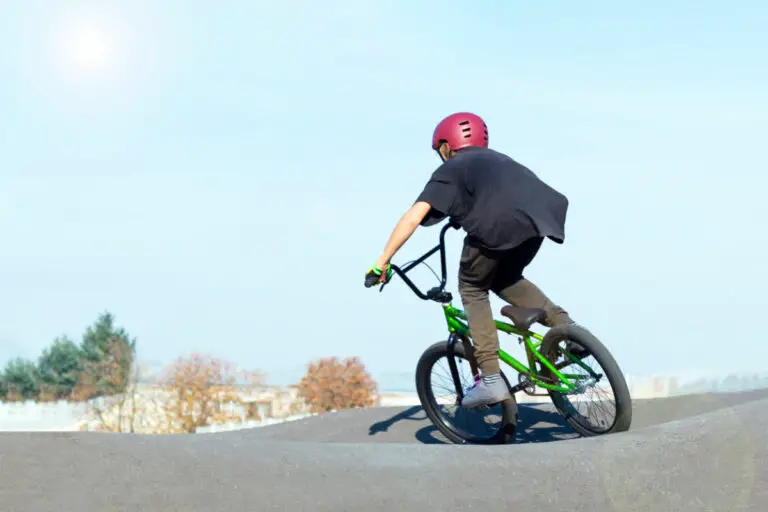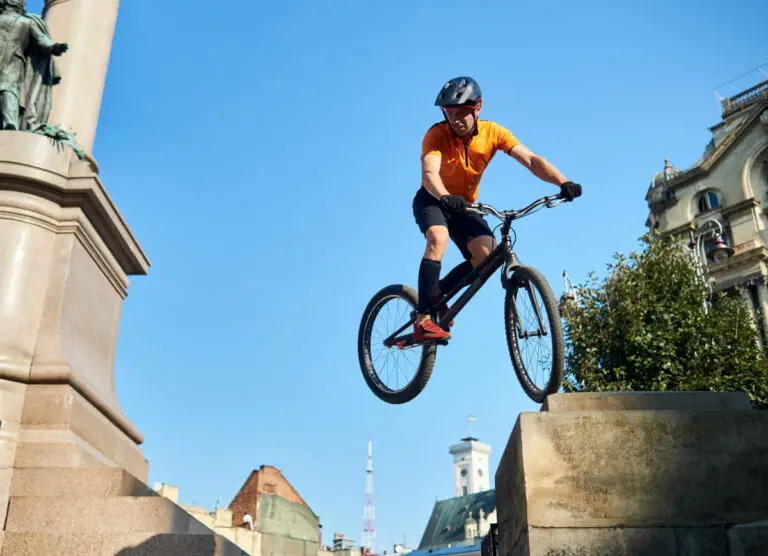Are BMX Bikes Good For Cruising?
With their compact size and maneuverability, BMX bikes have obvious appeal for dynamic sports like racing, tricks and jumps. But how well do these specialized bikes perform for casual riding and cruising around town? Let’s examine the pros and cons of using a BMX bike for cruising.
What is Cruising?
- Cruising refers to casual, relatively slow-paced recreational cycling, often in an urban area or park setting.
- Cruising prioritizes comfort and convenience over speed or performance.
- Riders use cruisers for short trips, sightseeing, group rides or simply enjoying time outdoors.
Key Takeaway
Cruising involves relaxed riding at moderate speeds, mainly for transportation, recreation and sightseeing purposes rather than athletic endeavors.
BMX Bike Attributes for Cruising
BMX bikes do possess some inherent qualities that translate well to cruising:
Compact Size
- The small stature of BMX bikes makes them very maneuverable for navigating urban areas, bike paths and trails.
- Riders can easily duck in and out of spaces or make quick turns when needed.
Durability
- BMX bikes are built to withstand impacts and abuse from jumps and tricks.
- This sturdy construction also handles wear and tear from curbs, potholes and debris often encountered while cruising.
Customization Options
- Many accessories like racks, baskets or lights can be added to customize a BMX bike for utility and visibility when cruising.
Key Takeaway
Important advantages of BMX bikes for cruising include their compact size for maneuverability, durability for urban conditions, and customization potential.
Drawbacks of BMX Bikes for Cruising
However, BMX bikes also have some disadvantages that make them less ideal for casual cruising:
Less Comfortable
- The small wheel size and basic design of BMX bikes provide a rougher, bumpier ride.
- This can make longer cruising trips uncomfortable compared to bikes with big wheels, suspension, or padded seats.
Limited Gears
- Many BMX bikes are single speed, lacking gears to maintain comfortable pedaling cadence on variable terrain.
- Even geared BMX bikes offer fewer gearing options compared to hybrid or comfort bikes.
Higher Pedaling Effort
- The direct-drive power transfer of BMX bikes requires more constant pedaling effort when cruising casually.
- Other bikes with bigger wheels offer easier rolling momentum to coast with less effort.
Key Takeaway
BMX limitations including less comfort, fewer gears, and higher pedaling requirements can make them less suitable for casual cruising needs compared to other bike types.
Wheels: Larger Sizes Offer Smoother Cruising
- Larger wheel sizes help provide a less jarring, more comfortable cruiser ride. Options include:
- 24-inch cruiser BMX bikes
- 26-inch BMX bikes
- 29-inch BMX bikes
- Larger tires also roll more smoothly over bumps and cracks in the road.
- Additional wheel diameter provides easier momentum to maintain cruising speed with less pedal effort.
Key Takeaway
BMX bikes with bigger wheel sizes will be better optimized for cruising comfort, speed, and ease compared to smaller 16/20-inch wheel varieties.
Frame Design Factors for Cruising
Certain BMX bike frames characteristics also affect cruising suitability:
Geometry
- A longer wheelbase and slacker head tube angle add stability for controlled cruising.
- Shorter top tubes allow a more upright riding posture for comfort.
Materials
- Steel BMX frames offer cushioned ride feel whereas aluminum transmits more road vibration.
- Suspension forks on some BMX bikes smooth out the ride.
Key Takeaway
Consider geometry for stability, frame material for vibration damping, and front suspension when selecting a BMX bike optimized for casual cruising.
Components to Enhance Cruising Ability
Upgrading certain components further adapts BMX bikes for cruising:
- Wide, smooth street tires for grip and comfort
- Multi-speed gears to handle variable conditions
- Caliper hand brakes for modulated stopping power
- Ergonomic grips that are softer and easier to control
Key Takeaway
Strategic component upgrades to the tires, drivetrain, brakes and cockpit setup can tailor a BMX bike to better meet cruising needs.
Riding Position and Handling Dynamics
- A BMX bike’s agile handling enables tight maneuvers useful when cruising congested urban areas.
- But the hunched forward attack position common on BMX bikes can feel awkward when casually cruising.
- A higher front end with swept-back handlebars creates more upright ergonomics suited to cruising.
Key Takeaway
Adjusting the riding posture more upright via the handlebar setup enhances control and comfort when using a BMX bike for casual cruising.
Appropriate Ages and Sizes for Cruising
- Small 16/20-inch BMX bikes best serve younger kids under age 12.
- Older kids and adults will benefit from larger 24” or 26” wheel BMX sizes for cruising comfort.
- Ensure the seat height allows proper leg extension when pedaling for efficient cruising.
Key Takeaway
Adult-sized BMX bikes with bigger wheels suit older riders best for casual cruising needs, providing proper fit and pedaling efficiency.
In summary, while BMX bikes are highly specialized for racing and tricks, they can also serve as casual cruisers with proper sizing and some component considerations. Focus on large wheels, comfort-oriented geometry, smooth tires, and easy pedaling ergonomics to maximize their cruising potential.


